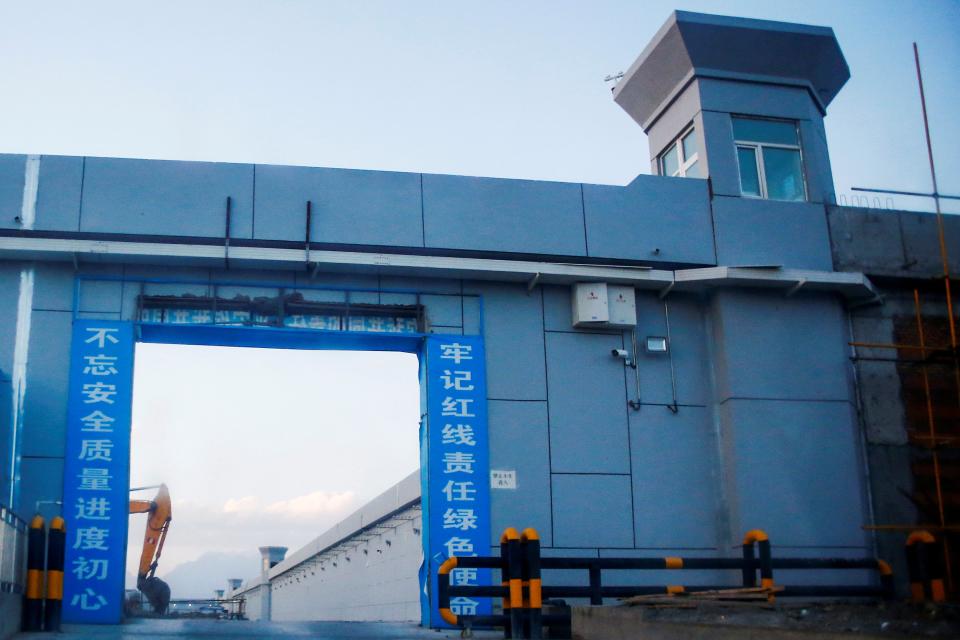Major Chinese study reveals goal to ‘reduce Uighur population density’ and assimilate minority culture

File image: A gate of what is officially known as a vocational skills education centre is photographed in Dabancheng, in Xinjiang Uighur Autonomous Region, China
(Reuters)A major Chinese study has revealed Beijing’s goals to ‘reduce Uighur population density’ and assimilate minority culture by giving new jobs – often far from home – to thousands of Uighurs and other ethnic minorities in Xinjiang.
The Chinese government dismissed any such goal to change the demographic of the region and emphasised that job transfers are aimed at raising their income and bring minorities out of poverty.
However, the administration’s idea, according to the study, is to assimilate Uighurs into the majority Han culture by changing their lifestyles and thinking, reported BBC News after examining the study that was accidentally placed online by the Chinese administration in December 2019 but taken down a few months later.
For instance, a 2017 video report, from the time the policy saw intense implementation, showed how things actually happened on the ground. The BBC News claimed that the four-year-old video report by China’s Communist Party-run news channel hasn’t been featured in the international news till now.
The video showed how government officials in a village in the Xinjiang region had to resort to going to every house when not a single person turned up for work in over two days.
The video showed officials pressurising a father to send his 19-year-old daughter for the job. When the father-daughter duo refused, the officials continued to push them until she eventually conceded stating that she would go “if others go.” The report ended with the young girl and many others like her bidding goodbye to their families.
The news report came at a time when Beijing is facing intense pressure from the international community over the conditions of minorities in the Xinjiang region and their condition in the government’s camps. China has repeatedly denied such allegations even as reports based on eye-witness accounts reveal instances of torture, assault and rapes in camps that Beijing claims are vocational training centres.
On 2 March, China’s foreign ministry spokesperson Wang Wenbin said “Xinjiang now enjoys social stability and a sound development momentum, and the local people are living a safe and happy life.”
“All residents in Xinjiang fully enjoy their rights, including the right to subsistence and development. Languages, traditional cultures and customs of all ethnic minorities in Xinjiang have been well protected and inherited. Over the past 60 years or so, Xinjiang’s economy grew by more than 200 times, its per capita GDP increased by nearly 40 times, and residents’ life expectancy rose from 30 to 72 years,” Mr Wenbin claimed.
However, the Chinese study that has been written by a group of academics from the Nankai University states that labour transfers are “an important method to influence, meld and assimilate Uighur minorities.” They emphasised that their relocation to other areas in China, in fact, “reduces Uighur population density.”
The Chinese foreign ministry dismissed the study stating that the report reflected “only the author’s personal view and much of its contents are not in line with the facts.”
Read More
China claims Tibet and Xinjiang are ‘shining examples’ of human rights ‘progress’
Biden calls on Xi Jinping to end ‘human rights abuses in Xinjiang’ in first China call
US bans all cotton and tomato products from Xinjiang over slave labour links

 Yahoo Finance
Yahoo Finance 